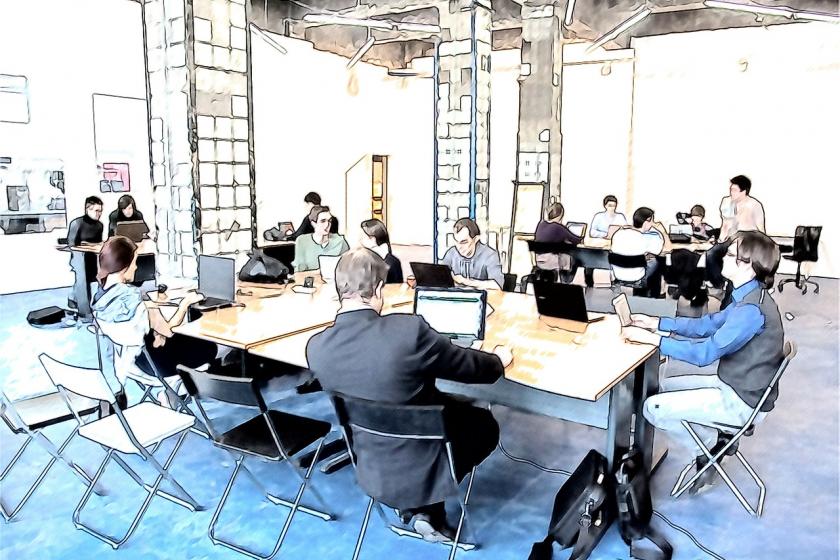How Enterprises Can Accommodate the Consumer and Business Personae
Enterprise IT must accommodate the business demand for order and the grab-and-go consumer mindset to meet the changing needs of their internal customers.
April 2, 2019

The rapid development of consumer technology has deeply affected the business sector. The iPhone went from an unknown quantity in 2007 to a game-changing, essential communications tool almost overnight. Thanks to the modern smartphone’s introduction, the self-service, app-focused mindset is natural for many consumers.
Most organizations have been slower to embrace tech-focused innovation. Many corporate, non-profit, and government organizations still exchange documents over email instead of using collaborative applications. Purpose-built, legacy applications frequently stand apart from faster-moving solutions like cloud services. When infrastructure and operations employees put on their “business hats,” they often inhabit a different mindset than they do in their day-to-day lives.
The enterprise is thus faced with two distinct personae. The consumer persona values instant communication, swaps apps seamlessly, and demands that companies meet their terms. The business persona, in contrast, is less taken with tech wizardry unless it conforms to security, governance, regulatory, and brand standards. Conflicts arise when these two personae collide. When the business persona confronts the demands of customer-facing teams, the focus on change management, security, and compliance frequently hampers their agility. Upstarts have gained ground on established market leaders because they lack the complications of legacy systems and the protections of well-defined policies and procedures. This tension leads employees to their consumer persona, shopping independently for cloud services and apps and then paying for them with corporate credit cards. The result is shadow IT, which circumvents IT departments and has consumed nearly half of all IT spending.
There are many problems associated with Shadow IT: integration issues, security risk, a lack of disaster recovery capabilities, cloud sprawl, and zombie spending on auto-renewing subscriptions. The business persona has every reason to object. But, that doesn’t mean the consumer persona should be ignored. The speed of the market demands a new suite of tools that bridge the entrenched business mindset and the newer consumer one, both internally and externally. Here are three approaches that can help.
1) Embrace the legacy—and move on
Established enterprises needn’t curse their legacy technology. Longstanding CRM and ERP systems house a wealth of information, which can be used to tailor the customer experience and business operations in ways market newcomers will envy. Problems arise, however, when the enterprise invests too much in maintaining these systems or obsesses over transitioning them to the cloud at the expense of more strategic needs.
Rather than recreating core business applications, many organizations are finding success building in integration points that serve as the “single point of truth” across the enterprise. Fortunately, legacy systems are typically stable. This makes them excellent candidates for outsourcing support, which can free up resources to drive the digital transformation necessary to meet escalating consumer expectations.
2) Meet the needs of the internal consumer
The IT team can counter employees’ consumer impulses with greater responsiveness. Teams want to achieve goals, and if they are routinely rejected by IT when they ask for tools and assistance, they will seek alternatives.
Many enterprises are quashing Shadow IT and enhancing security, governance, and budget control by supplying self-provisioning capabilities. Retail-like technology clearinghouses put various pre-vetted solutions at the fingertips of enterprise teams. The solutions offered can include proprietary and custom-built software, public cloud services, apps, and more. Because the solutions are pre-selected and integrated, and all spending is processed through IT, the business persona is satisfied while the consumer shops at will for the right products for the job at hand.
3) Give the business persona a seat at the agile table
It’s all too easy to complain about the cranky, governance-focused business persona—until there’s a technology meltdown, serious data breach, or other problem that could have been avoided with greater attention to processes and procedures.
For this reason, enterprises are becoming more adept at bringing the business persona to the agile table, like expanding the popular DevOps model to create DevSecOps. Similarly, omnichannel customer service management solutions can help maintain brand standards across customer interaction points.
Just as we are all combining roles in our own lives—finding ways to be professionals, parents, caregivers, hobbyists, and more—enterprises can balance the different facets of their “personalities.” By accommodating both the business demand for order and the grab-and-go consumer mindset under a new paradigm, enterprise IT can more effectively meet the diverse and changing needs of their internal and external customers.
About the Author
You May Also Like


